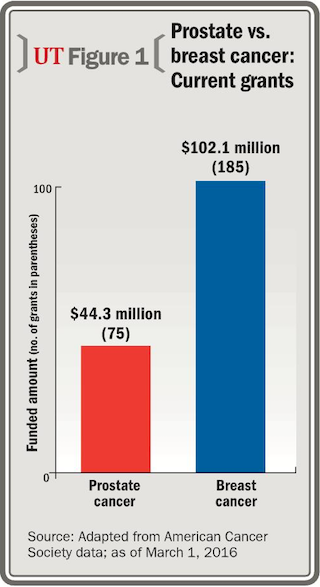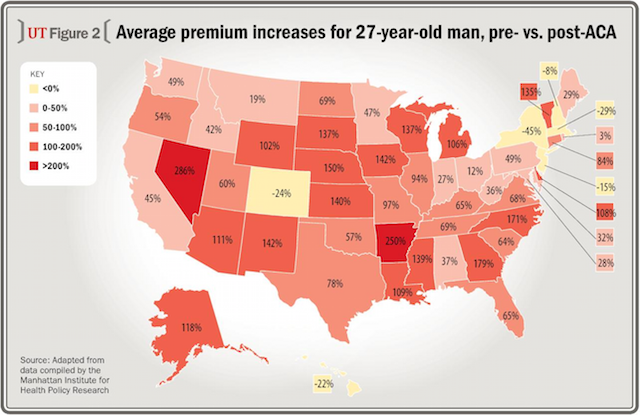Article
The Affordable Care Act: How it has impacted men’s health
Author(s):
The ACA is a large step forward in allowing men to embrace their health concerns, and for health care practitioners to understand men and the challenge of help seeking, masculinity, and disparity in their quest for wellness (Men’s Health in Primary Care [Current Clinical Practice]. Switzerland: Springer International Publishing, 2016).


The Affordable Care Act (ACA) has provided a substantial benefit for millions of Americans who otherwise wouldn’t have been able to afford or have access to primary and specialty health care. Going to the doctor, however, still can be very costly for men who lack health insurance, which in many cases has resulted in avoidance of health care or overutilization of emergency department services. The ACA is a large step forward in allowing men to embrace their health concerns, and for health care practitioners to understand men and the challenge of help seeking, masculinity, and disparity in their quest for wellness (Men’s Health in Primary Care [Current Clinical Practice]. Switzerland: Springer International Publishing, 2016).
Also see - Epigenetics and genetics: The future of cost-effective care?
An estimated 41.3 million uninsured people became eligible for new health insurance coverage under the ACA, the majority of whom were adult men. Prior to the installation of the ACA, approximately 33% of American Indian and Alaska Native men, 25% of Hispanic men, 20% of African-American men, and 12% of Caucasian men did not have health insurance, while notably 25% of men between the ages of 19 and 25 years had no health insurance coverage, according to the Centers for Medicare & Medicaid Services (CMS).
Pre-ACA figures from the first half of 2013 showed that 31% of men aged 25 to 34 years went without insurance, as opposed to 22% of women in the same age group. In addition, 26% of men never saw a doctor in 2012, compared to only 13% of women.
Next: Disparities in coverage identified
Disparities in coverage identified

Early critics of the ACA pointed out disparities in coverage between women and men. While the law expanded contraception coverage for women (eg, oral and implantable contraceptives, tubal ligations), not all insurance companies have covered vasectomies, and most do not cover condoms. Similarly, all insurance companies cover screening for sexually transmitted infections in women, yet only for high-risk men, including human immunodeficiency virus screening. To date, not all health insurance companies cover gonorrhea testing in men.
Read - ED, diabetes, and CV risk: Update on treatment, risk reduction
These disparities have led to an outcry in the male community, citing “sexism” in the ACA, as reported by change.org. Another point of disparity that has led to claims of gender bias in the ACA is domestic violence screening. Women have full coverage for screenings at no cost, yet men do not, while the rates of domestic violence against men are rising in both opposite-sex and same-sex relationships.
To date, there are no federal health offices with specific provisions to adequately address male-specific health issues. The ACA lists 134 references to women’s health, yet has only two references to men’s health without a clear definition or plan for these references. The law even has a specific chapter dedicated to women’s health but nothing dedicated to men’s health (“The Affordable Care Act, Section by Section” [hhs.gov] and “Shining a Light on Health Insurance Rate Increases” [cms.gov]).
The ACA dedicates an entire section to breast cancer, but gives no attention to prostate cancer, while a substantial disparity exists between men and women when it comes to spending on cancer research (figure 1). The importance of wellness and comprehensive care for men across the lifespan seems to have been marginalized, other than to offer a simple entry point to the health care system.
Recommended: Five key elements of a successful men’s health center
Wellness and preventive care are provisions that should be equally provided to men and women of all ages throughout their lives. To date, there remains a disparity in coverage across many major insurance plans, although this gap has narrowed in the last few years. Through the ACA, individual states have the opportunity to expand Medicaid coverage to all uninsured adults aged 19 to 64 years with incomes up to 133% of the federal poverty level. In those states expanding Medicaid coverage, many parents and single and childless adults are now eligible for health care coverage.
Next: Financial assistance available
Financial assistance available
Additionally, financial assistance to help pay for monthly premiums and lower out-of-pocket costs can be available to men applying for health care coverage through the marketplace, CMS reports. Notably, the ACA plans have resulted in drastic increases in premium prices for men in nearly every state, raising the question of how men can sustainably afford such coverage (figure 2).

Over a decade ago, prior to embarking on writing an evidence-based men’s health textbook, I asked a random male patient in my practice to give me his views of men’s health. His reply was, “Guy problems. You know, prostate and genital problems. They die of heart attacks and strokes mostly... Oh yeah, some cancers too. And stupid, risky behaviors. Guys like to take chances, and don’t always think about what might happen to them. We should know better.” (“Clinical Men’s Health: Evidence in Practice.” Philadelphia: Saunders/Elsevier, 2008).
Have you read: How a young urologist can start a career in men's health
It became clear to me that many men struggle to understand the key health care provisions that they should receive, while many lack access to health care. The ACA has provided the portal, yet in many cases, unequally for men.
Next: What needs to be done
What needs to be done
Substantial opportunities exist to improve upon multidisciplinary men’s health now that the ACA is in place. An updated report analyzing the current state of men’s health in the United States is desperately needed to outline where efforts should be directed to decrease morbidity and mortality from preventable illness. An office of men’s health at the National Institutes of Health with efforts dedicated to understanding the unique needs of men and to close the gap in disparities would help improve the health of men and families in our communities, similar to the efforts provided by the existing office for women’s health.
Also see - Personalized messaging: Communicating with men about their health
The future of men’s health sits on opportunistic ground. Who owns the domain of men’s health? There is no clear answer, yet collaborative efforts across medical disciplines including primary care, urology, andrology/endocrinology, cardiology, and mental health need to band together in research, guideline development, and health policy to foster more accessible and cost-effective strategies to care for men.
U.S. medical schools continue to see a decline in interest in students entering primary care, with less than 10% of graduating students matching in family medicine. Most of those matching in internal medicine will choose to be specialists or hospitalists. Most students matching in family medicine are women, many of whom will choose to focus on women’s health. Nurse practitioners and physician assistants can’t be minted fast enough to compensate for the deficit in primary care to care for our male patients.
Now is the time to invest in men’s health, build upon the framework of the ACA, and improve the health care of men and our communities.
More from Urology Times:
Prostate biopsy-related infections raise transfusion risk
Use of observation for PCa varies widely among urologists
Water ablation’s safety, efficiency in BPH assessed
Subscribe to Urology Times to get monthly news from the leading news source for urologists.
















